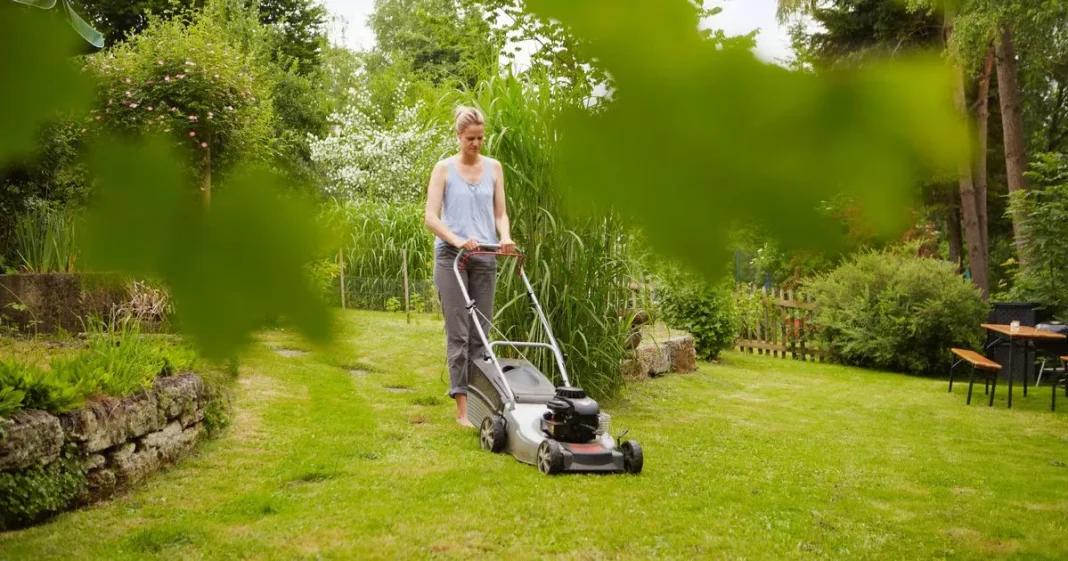As spring brings in the sunshine and longer days, eager gardeners are being tipped off on the prime time to trim their turf for that perfect summer lawn. Samantha Richards, a garden gazebo expert from Gazeboshop, advises that with temperatures steadily over 8C, April is often when Brits give their grass its first chop of the year.
To keep your lawn in tip-top shape, she recommends mowing at least weekly to a height of about 4cm, which helps ward off unwanted weeds and moss. But it’s not just about frequency – timing is key, according to Samantha.
She suggests: “In terms of the best time in the day to mow your lawn, we recommend mid-morning, between 8am and 10am. Not only will it risk neighbour wars, but mowing too early in the morning or late in the day can expose your grass to disease and fungal infections if you’re not careful.”
Fantastic Gardeners back up this advice, pointing out that early morning dew can harm both your mower and your lawn, leading to torn grass and compacted soil. They also warn against evening cuts post-6pm due to increased infection risks and insufficient recovery time for the grass before night sets in.
As the weather warms up, gardening expert Samantha is urging Brits to tackle unsightly dead grass patches on their lawns. She advises: “Whether you had a gazebo on your lawn last summer or it’s struggled to survive the bout of storms, start by getting some compost and an even spread of seeds, and apply it to the soil.
“Rake this in gently and then lightly firm it with your feet. Next, spray the area with a hose, but make sure you’re not pushing the seeds out in the process.”
In addition to reviving lawns, Samantha recommends setting aside time for other essential spring gardening tasks.
Mulch is a vital tool in maintaining healthy soil, controlling weeds, regulating temperatures, and improving soil structure. It’s best applied from mid to late spring, and doing so will help retain moisture in the soil during the warmer months.
Samantha notes that various types of mulch are available, but the application process remains the same.
“Start off by preparing the ground and removing any weeds, then lay around 5cm worth of mulch onto the bed or around your plants,” she advises. “Use a narrow spring tine rake or garden fork to help with this step. It’s beneficial to spread the mulch around so it’s evenly distributed and make room around the base of trees so it’s not in direct contact.”
As the summer months approach, gardening enthusiasts are reminded to think of our striped little friends by avoiding planting flowers that push bees and bumblebees away. Experts advise steering clear of blooms like hydrangeas, petunias, and busy lizzies since their intricate petals can hinder bees from reaching the nectar.
The advice comes with a flourish: “By collecting nectar and pollen from the plants, pollinators play a pivotal role in the garden. Since bees associate the shiny metals with sugar, it’s important to avoid planting dark coloured flowers like red too.”
Gardeners looking to attract these essential creatures should opt for plants with shallow blossoms such as daisies, abelia, lungwort and crocus; not only do they provide a feast for the eyes with vivid blues, purples and yellows but also they’re bee-friendly. Samantha commented on this smart choice, highlighting the dual benefit of colour and accessibility for our buzzy pals.
As the growing season kicks off, ensuring your greenhouses are spick-and-span is crucial – they’re oases where your plants thrive unless left unattended, which can lead to a host of problems like pest infestation or plant diseases.
Samantha is full of tips on this front too, suggesting: “The most effective way to clean your greenhouse is by mixing a warm water and vinegar solution together and wiping off any mould, mildew, moss and grime. Make sure you pick a mild, dry day to do this job and move everything outside of the greenhouse first before you start removing dead plants and cleaning the staging and guttering.”
While it might seem like a chore, cleaning your greenhouse is essential to let in more light and promote a thriving plant environment.
It’s time to get those ladders out and check the gutters on your house, sheds, and greenhouses. This vital maintenance task ensures that any spring rain efficiently fills your water butts.
Blocked gutters can cause all sorts of problems, from water spilling over to potential mould growth. An expert warns: “If too much water runs over the soil in your garden, this will also make it difficult for your lawn and new plants to grow as the soil will be stripped of valuable nutrients.”
They advise: “By regularly cleaning your gutters over the coming weeks – especially if there’s been heavy rain – this will ensure your plants receive pure, healthy water, whilst also keeping the soil around your house at a stable moisture level.”
At Reach and across our entities we and our partners use information collected through cookies and other identifiers from your device to improve experience on our site, analyse how it is used and to show personalised advertising. You can opt out of the sale or sharing of your data, at any time clicking the “Do Not Sell or Share my Data” button at the bottom of the webpage. Please note that your preferences are browser specific. Use of our website and any of our services represents your acceptance of the use of cookies and consent to the practices described in our Privacy Notice and Cookie Notice.

